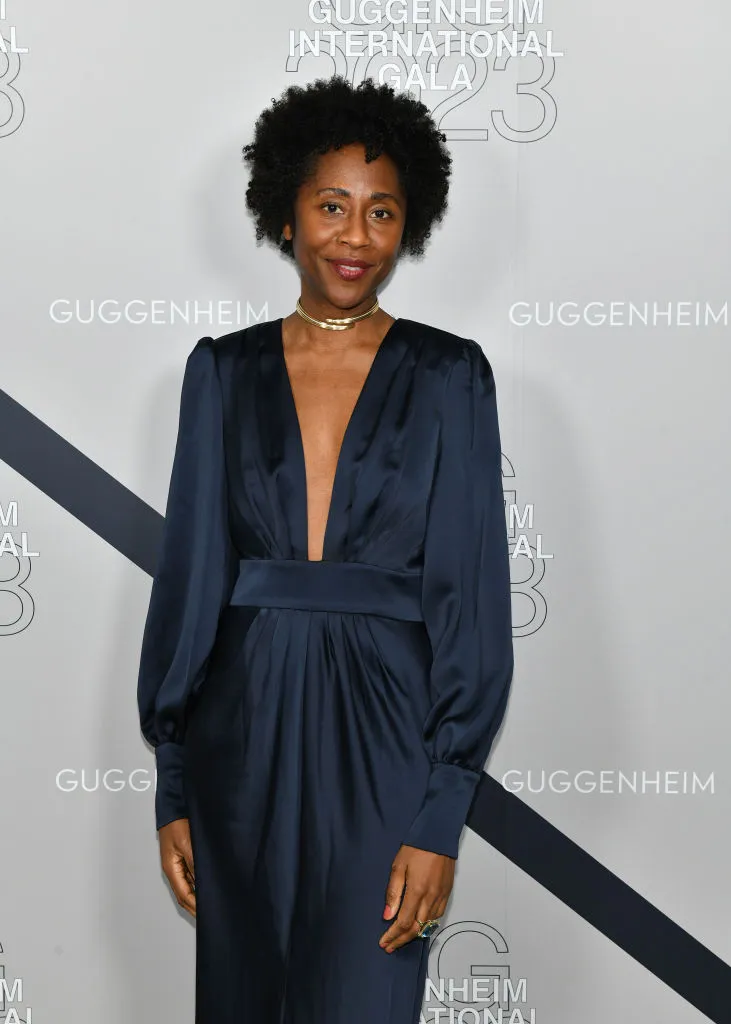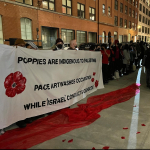
To receive Morning Links in your inbox every weekday, sign up for our Breakfast with ARTnews newsletter.
THE HEADLINES
PROTEST AT PACE. Pro-Palestine activists disrupted the opening of Israeli artist Michal Rovner’s exhibition at Pace Gallery in New York City yesterday, reports ARTnews Associate Editor Tessa Solomon. The activists criticized Rovner for her use of the poppy, which holds symbolic significance to Palestinians, in her practice. Pace staff led both activists and visitors outside, and barred any further entry to the exhibition until 7 p.m. While outside, the activists brandished a banner that read “Poppies Are Indigenous to Palestine / Pace Artwashes Occupation While ‘Israel’ Conducts Genocide.” The exhibition reopened its doors to visitors within thirty minutes. A spokesperson for the gallery told ARTnews: “We believe in the art gallery as a place for discourse and feel it’s our responsibility to offer this space.”
INTERNATIONAL WOMEN’S DAY. Several outlets are marking International Women’s Day with a range of arts coverage. The BBC examines the 160-year mystery of Europe’s female “Venus figurines” carved some 40,000 years ago. The raison d’etre of these Stone Age artifacts remains unsolved, but they account for the majority of artworks that have survived the era, found across Europe and Asia. Elsewhere, the still-unbuilt-built Smithsonian American Women’s History Museum (SAWHM) in Washington DC is debuting its first exhibition online. Titled “Becoming Visible,” the exhibit is narrated by actress Rosario Dawson, and celebrates overlooked women in history. The Musée d’Orsay in Paris is broadcasting video works on its website in partnership with the group, Puissance de Femmes [Power of Women]. Plus, this year’s Archives of Women Artists, Research and Exhibition (AWARE) prize celebrating female artists was awarded to Laura Huertas Millán and Katerina Thomadaki. But not all related news was festive. Le Quotidien de l’Art reported the Ecole des Beaux Arts de Paris appears to have censored a new book it published, removing #MeToo content printed in an earlier edition. Titled, “Les Suffragettes de l’art. L’entrée des femmes a l’Ecole des Beaux-arts,” [The Suffragettes of Art. The Entrance of Women into l’Ecole des Beaux-arts], the book’s cut passages referred to the school’s former director, Jean-Marc Bustamante, accused of sexism and ignoring complaints of sexual harassment made by students.
THE DIGEST
Spanish police have busted a ring allegedly responsible for forging and trafficking fake Banksy artworks. Officers have arrested two people in Zaragoza, and two others with “knowledge of the art world” so far, while Spanish authorities said the investigation remains open. The fake Banksy’s made with spray paint on cardboard were sold online around the world and at a Barcelona auction for up to about $1,640 each, complete with fabricated certificates claiming the works were part of Banksy’s 2015 “Dismaland” project near Bristol. [AFP]
The Governor General’s Awards in Visual and Media Arts in Canada were announced Wednesday. Eight honored artists will receive $18,000, including, Shuvinai Ashoona, from Kinngait, Nunavut, who is the third Inuk woman to receive the award, as well as filmmaker Marjorie Beaucage, and the photographer Greg Staats. [The Art Newspaper]
Deputy director and chief curator of the Solomon R. Guggenheim Foundation and Museum, Naomi Beckwith has been awarded the David C. Driskell Prize. The $50,000 award honors contributions to contemporary art by Black artists and art historians. [The Art Newspaper]
A legal battle over the art-filled inheritance of Margret Kainer, a Jewish refugee of Nazi persecution who died in 1968, is being waged in Lausanne, Switzerland. Mondex Corporation, representing Kainer’s relatives, claims their clients were denied their inheritance, valued at over $57 million in art alone, because local authorities concluded Kainer had no living relatives. [Le Monde]
The Dia Art Foundation has announced a new landscaping project to restore its lawn to native meadowlands, in response to rising Hudson River floodwaters caused by climate change. Studio Zewde is leading the project, which involves land behind the Dia Beacon building that will be planted with more than 90 native meadow species and nearly 400 new trees and shrubs. [Artnet News]
Icelandic Conceptual artist Hreinn Friðfinnsson, known for his playful, poetic works incorporating everyday objects, has died at the age of eighty-one. [Artforum]
Ukrainian art historian and journalist Oksana Semenik is lobbying museums to reconsider how they classify Ukrainian art, and teaching thousands about overlooked Ukrainian artists, via social media, where she has a strong following. [The New York Times]
THE KICKER
RODIN’S RABBITS. Wild rabbits have invaded the manicured grounds of the museum and historical monument Les Invalides in Paris, chewing up cables and digging messy holes in front of Napoleon’s tomb. The problem has stumped authorities, whose attempts to solve the problem have been thwarted by animal-rights activists. But The Guardian’s Agnès Poirier reminds readers the French rabbits are of historical significance, including inspiring the sculptor Auguste Rodin to move to the neighborhood’s Hôtel Biron, which he later bequeathed to the state, becoming what we now know as the Rodin Museum. “You should, my dear great friend, come and see this beautiful building and the room that I have rented today,” wrote the poet Rainer Maria Rilke to Rodin in 1908, referring the Hôtel Biron. “Its three big French windows prodigiously give out on a wild garden where one can see naïve wild rabbits jump through the trellis like in an old tapestry.” Sufficiently seduced, Rodin took up his friend on the suggestion, and later made it his home.

